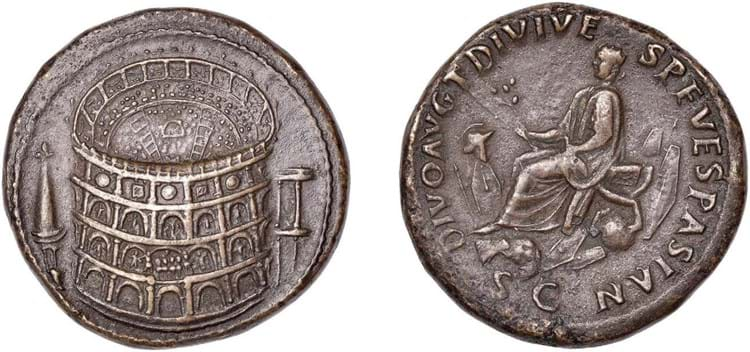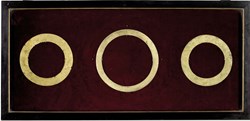The coins were acquired over a remarkably short period of eight years from 1933-41, some of them being bought at London auctions during a time when the capital was under attack from the Luftwaffe.
The sestertius dated from the brief reign of Divus Titus, who was Roman emperor from 79-81AD. Only 10 specimens of this type are known, of which seven are in museums. It is a “full grade”, says DNW, “finer than the only other example sold recently”.
The posthumous coin, from 81-82AD, depicts the recently completed Colosseum, which had been finished during the reign of Titus. Bought by the collector in February 1939, it had been estimated at £60,000-80,000. A European private collector won the bidding battle against strong competition.
Another sestertius from 134-138AD depicting the Emperor Hadrian addressing his British troops made £38,400 against an estimate of £3000-4000. When it was last sold as part of the Drabble Collection in July 1939, the cataloguer, Albert Baldwin, described it as “possibly the finest known specimen”.
“Quality always tells, ” says Christopher Webb, head of the DNW coins department. “This collector had a good eye, was well advised and bought all the classic coins. Add to that the fact that the collection was fresh to the market, as none of it had been seen since 1941, and the prices speak for themselves. It was a sensational result.”










